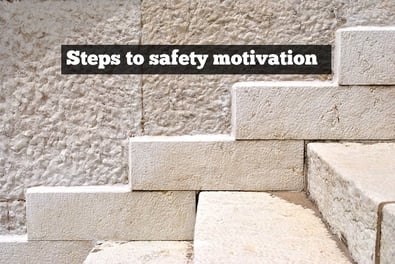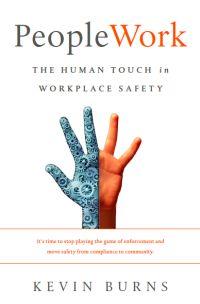Improve Safety Motivation In 4 Easy Steps
Improve an employee's motivation to do the work and you improve their motivation to do the work safely.
 As a front-line safety person or supervisor, you have the greatest impact on employee motivation. The words you use, your facial expressions, and your demeanor all speak without words on how much you value the people you work with.
As a front-line safety person or supervisor, you have the greatest impact on employee motivation. The words you use, your facial expressions, and your demeanor all speak without words on how much you value the people you work with.
People can feel when they are not valued. People can read between the lines of what their bosses think about them. And when you work for someone like that, it's tough to find your own motivation to do your best. After all, if you don't feel valued, why bother?
When an employee lacks motivation, there is a corresponding reduction in engagement. That affects productivity. Without motivation to give their best, an employee will be more apt to take shortcuts. Shortcuts impact safety. Keep employees focused, engaged and motivated to do their very best. It can build a team of high-performers willing to value themselves and each other. The best way to protect their value is by ensuring each others' safety.
Motivation plays a clear role in engagement and, subsequently, safety. Here are four steps you can take to improve the motivation of your team:
1Have clear expectations. Employees without goals or expectations become unfocused and aimless. If employees don't see the point of the work, they won't put their heart into the work. Without full engagement, it's nearly impossible for workers to find the motivation to give their best. Employees need goals and targets to work towards. But let's be clear, the targets are not safety performance numbers. Employees need individual performance improvement goals. When an employee can see clearly where they need to focus and why it's important, they can motivate themselves. It's so much easier to get behind something of meaning.
2Give continuous feedback. People are willing to improve with feedback. If they don't know how they are doing, they won't know that they have to improve. Feedback should focus on both their strengths and areas of improvement. Recognize that which they do well. Address that which needs attention. Through regular feedback, you and the employee get the chance to fix things in the moment, not tomorrow or next week in a meeting. Ensure that the feedback for improvement is given privately. The feedback for recognition can be public.
3View your people as a championship team. Your people-view matters. How you view them is how you will treat them. And they will follow your lead. If you don't believe in their abilities, they won't believe in their abilities. For an employee, it's tough to motivate yourself when you know that your boss doubts your ability. If you doubt their abilities, they will find it difficult to find their own motivation to do the work better. But if you have faith that you have good, competent people on your team, you will treat them as good competent people. If you believe it, they will believe it. Motivation improves when you place an expectation of being capable of more upon them.
4Don't miss a day. Skip a day of building your team and your efforts will be inconsistent. Inconsistency causes motivation to subside. This is especially true in the early stages as the team is finding its legs. You must be disciplined to give feedback and encouragement daily. Always have a positive thing to say, have clear expectations, and view your people as valuable and valued members of your team. They will come to expect that you are there for them and they will be there for you. Make it a point to touch your team members each day with something positive. The more you do it, the more you will feel motivated to do more of it. They will come to expect it.
 You will notice that there has been no talk of rewards and incentives here as we've been talking about motivation. Since the 1950's, it has been proven that rewards and incentives can retard performance overall. This is especially true in work that requires any kind of rudimentary thinking. And when it comes to safety, we want our people to be thinking about the value of the team - not the value of the prize.
You will notice that there has been no talk of rewards and incentives here as we've been talking about motivation. Since the 1950's, it has been proven that rewards and incentives can retard performance overall. This is especially true in work that requires any kind of rudimentary thinking. And when it comes to safety, we want our people to be thinking about the value of the team - not the value of the prize.
Motivation isn't about outside stimulation. It's about recognizing value and potential in each of your team's abilities. It's about positive, continuous growth. Improve an employee's motivation to do the work and you improve their motivation to do the work safely.
Kevin Burns has authored ten books on human performance and safety, including his most recent release, PeopleWork - The Human Touch in Workplace Safety. Buy it now on Amazon. Then, consider bringing Kevin's consulting expertise to your company or have him speak at a safety event.
©2017 ZeroSpeak Corporation and Kevin Burns.
No part of this post may be reproduced without the expressed consent of the author.


